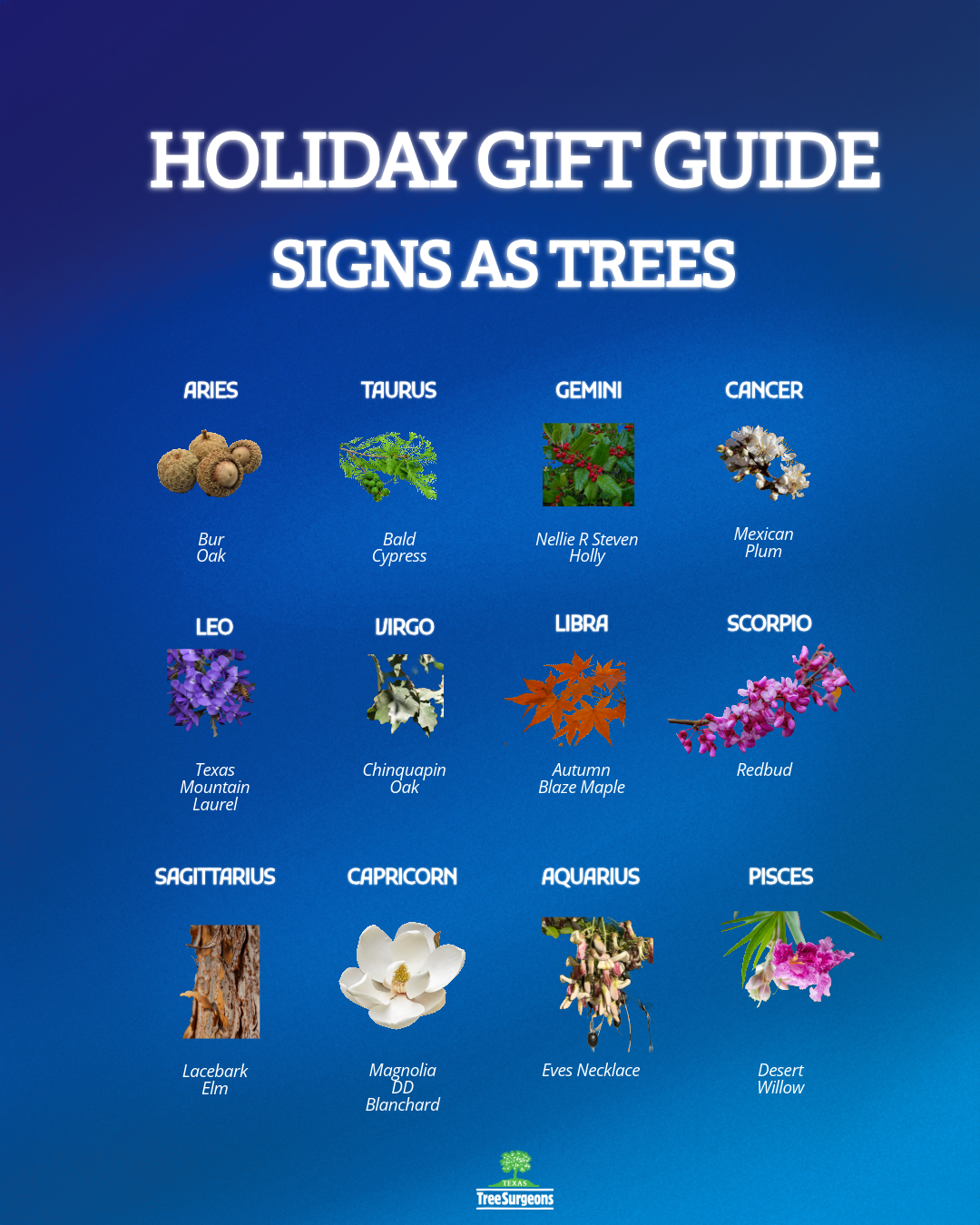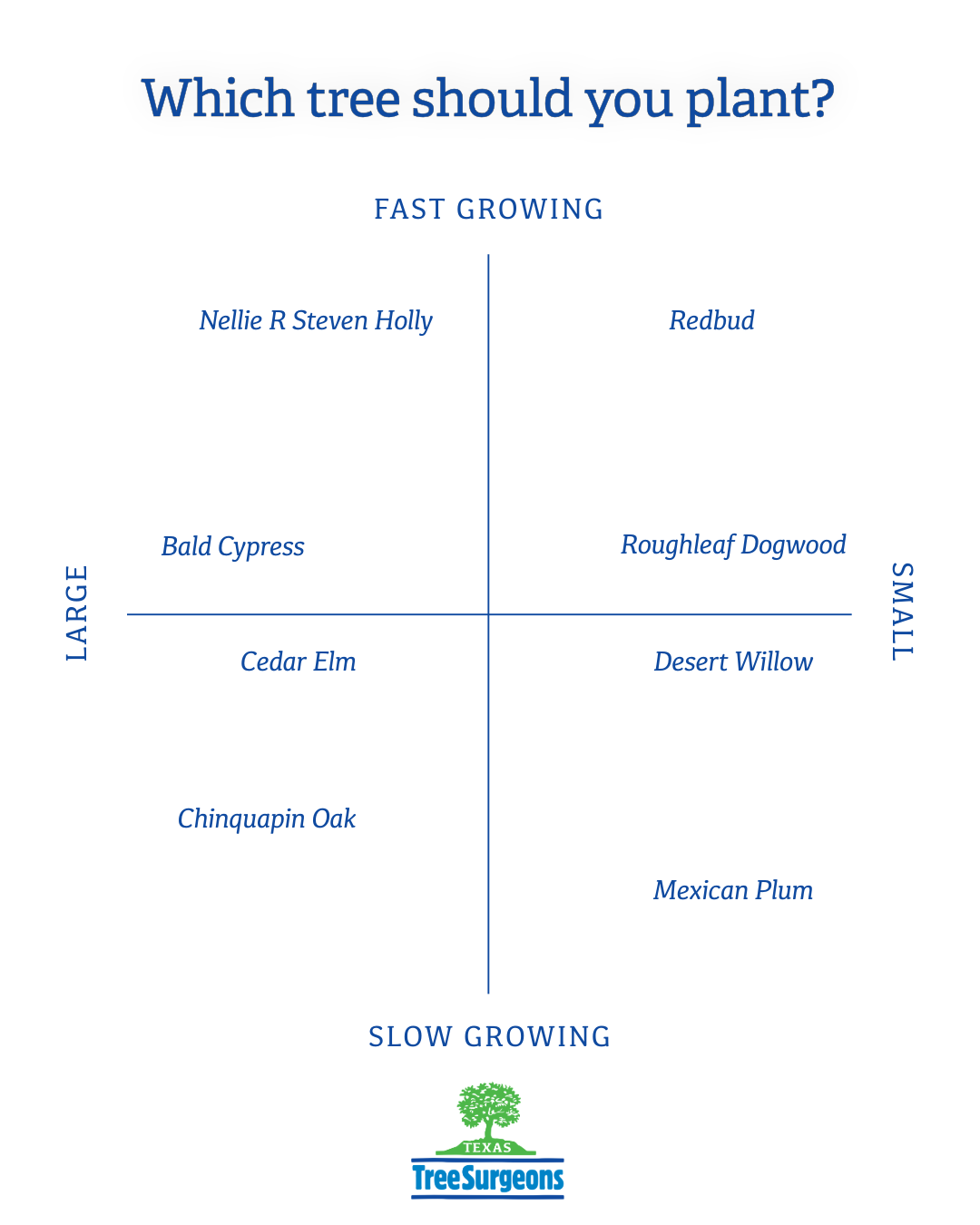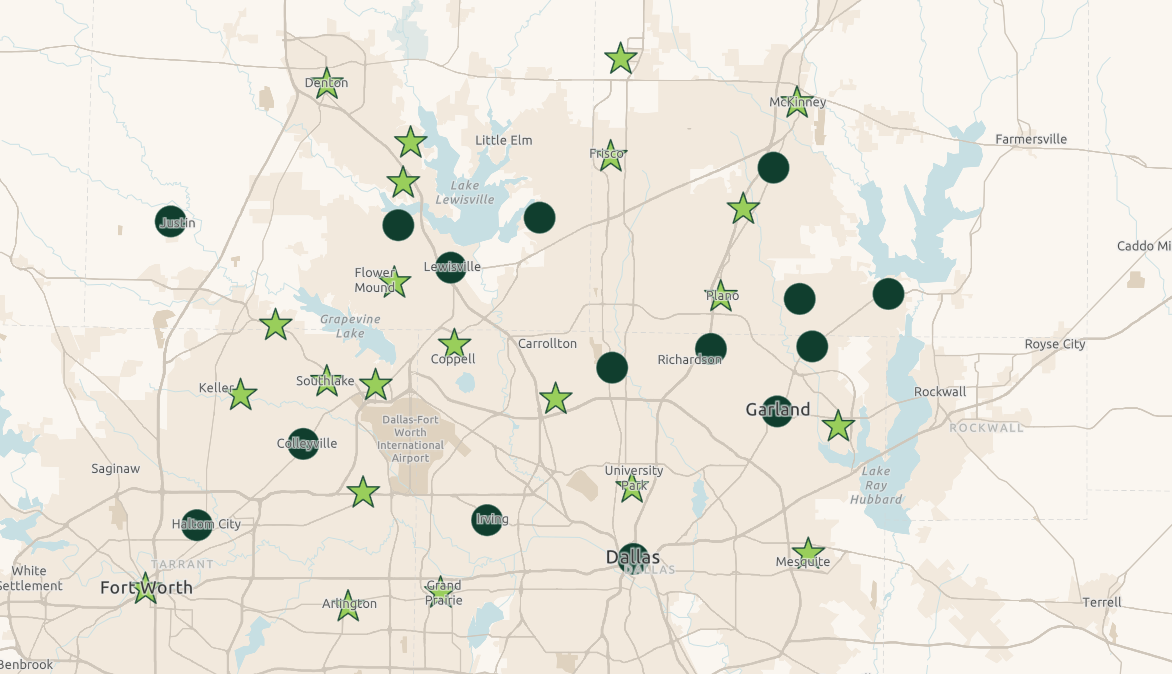Top 10 Ornamentals That Aren’t Crape Myrtle’s

We’ve survived another summer, and it’s finally fall. Autumn is the time to plant new trees while the weather is more mild. Young trees need time to establish themselves before the weather becomes extreme again.
This is our 2024 top ten list of trees to plant when you have limited space. Don’t get us wrong, we think Crape Myrtles are beautiful, but not when they are topped. When space is an issue choose these ornamental trees instead.
1. Ruby Falls Red Bud


The ruby falls redbud is a compact version of a redbud tree with a beautiful weeping canopy. Smaller than a redbud which grows up to 20 ft tall, a ruby falls redbud stands between 6-8 ft tall. This deciduous tree blooms early in spring with stunning bright magenta blooms and heart shaped leaves in the fall. Its flowers can be used to make a delicious floral redbud jelly. The ruby falls redbud does best in full sun or light shade and tolerates most soil conditions. Best time to trim is after its blooms are spent in the spring.
2. Mexican Plum


Mexican plum is a small tree that grows up to 25 ft tall. Known for its beautiful white flowers that bloom early in spring this drought tolerant tree produces fruit that ripen in late summer that can be used to make jelly and jams. Unlike the bradford pear this white flowered tree is not invasive and is structurally sound. During the fall its leaves turn orange before dropping. This tree is relatively slow growing and does best in full sun or light shade. Best time to trim is after its blooms are spent in the spring to not disrupt bloom production.
3. Chitlapa

Chitlapa is a hybrid between Desert Willow and Northern Catalpa which are both native trees to Texas. The tree begins blooming in May and continues well into late fall with large clusters of pinkish or whitish funnel shaped flowers. Chitlapas are a rapid growing deciduous tree that typically grow around 20-25 ft tall. Unlike either of its hybrid parents, Chitalpas are sterile and produce no messy seed pods. Best time to trim is in late fall or winter when the tree is dormant.
4. Saucer Magnolia

The saucer magnolia also known as a tulip tree blooms early in the spring and is one of the most popular trees in the United States. This deciduous tree is stunning with its color and large petals when in bloom. You can pickle magnolia blossoms and use them as a garnish in food. Full sun is best for this tree and it does well with the soil found here in North Texas. They grow between 20-30 ft tall. Best time to trim is after its blooms are spent in the spring.
5. Texas Mountain Laurel


Not much seems to bother this drought-tolerant tree. A hard freeze might eliminate blooms one year but it won’t kill it. Texas mountain laurel requires good drainage and the trees are happy growing among rocks and limestone in other parts of Texas. This small tree looks more like a large shrub. It prefers full or partial sun and grows approximately 20 feet tall. It is green all year and in March, when it is in full bloom with gorgeous purple blossoms, it puts out a delicious scent reminiscent of grape bubblegum. It is a kid favorite, but beware the silvery pods it puts out in late summer. The pods hold a red bean that can be poisonous in large amounts. Best time to trim is in late fall or winter when the tree is dormant.
6. Yaupon Holly


Yaupon holly is a versatile, multi-trunked shrub or small tree. Yaupons can be trimmed into a hedge or left to grow as an individual tree, making it a popular choice for residential and commercial landscaping. A hardy evergreen, yaupons produce small white flowers in the spring and the female plants produce bright red berries that stay until fall. Yaupons are drought-tolerant and can reach a height of 25 or 30 feet. The leaves of a yaupon can be dried and used for tea. They are the only caffeine-containing plant that is native to North America. Best time to trim is late spring or early summer.
7. Flowering Dogwood


Flowering dogwoods generally exhibit white blooms, but may also show pink or other colors. They bloom for 3-4 weeks in the springtime, and in the fall their leaves turn crimson and produce red berries in the winter. In their natural environment, dogwoods are understory trees, protected and surrounded by other trees. Because of this, flowering dogwoods prefer at least partial shade to thrive. They grow up to 40 ft tall making them a big small tree. Best time to trim is in late fall or winter when the tree is dormant.
8. Possumhaw

Possumhaw is a deciduous shrub or multi-trunked tree known for its stunning red berries that are highly visible in the fall after its leaves have been shed. This tree grows between 10-15 ft tall and blooms small white flowers in May. Possumhaw needs full sun or partial shade with well-drained soil to thrive. Technically drought-tolerant it can tolerate a variety of soil types found here in North Texas. The berries provide food to local birds and animals but are poisonous if ingested by humans. Best time to trim is in late winter or early spring.
9. Fringe Tree

The fringetree is a small deciduous tree that grows slowly and will reach 12- 20 ft tall. This native East Texas tree does well in other parts of Texas due to it being able to handle the clay soil found in areas of North Texas. This tree grows best in full or partial sun but more sun means more flowers. They bloom in late spring with fragrant flower clusters that look like fringe. Late summer they produce bluish black fruits that are oblong shaped. Best time to trim is in late fall or winter when the tree is dormant.
10. Crabapple

Crabapple trees are a native Texas tree that produce white, pink, or red flowers that bloom around April that are followed by a small crabapple in the fall. The fruit is incredibly tart but can be made into a jelly. The tree requires sun to partial shade and can grow up to 15 ft high. Best time to trim is in late fall or winter when the tree is dormant.
If you are looking for even more tree recommendations check out past years list or give us a call, we love talking about trees. While we don’t offer tree planting we do have a few resources to help you plant your tree correctly. We hope we inspired you to plant more trees in your yard with our blog on Top 10 ornamental trees.
Related Blogs
Similar blogs related to this topic


Holiday Gift Guide, Zodiac Signs as Trees
This holiday season a gift that keeps on giving in a time of over consumption is the most ethical and thoughtful gift. It is investment in a shared future that benefits their home and the…
Read more

Which Tree Should You Plant?
Tree selection needs to include a balance of preference in style with species selection that can thrive in North Texas unique soil conditions and climate. Below are some essential questions to ask yourself to ensure…
Read more

Benefits of Becoming a Tree City USA in Texas
In recent years, many Texas communities are exploring how to achieve Tree City USA. Tree cities reap numerous advantages, ranging from environmental to social benefits, enhancing the lives of their residents. What are the perks…
Read more
